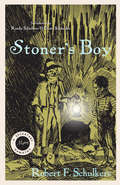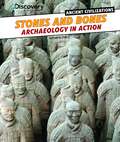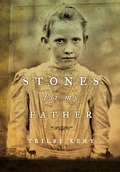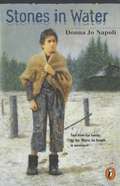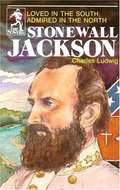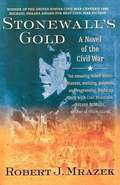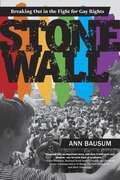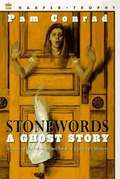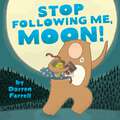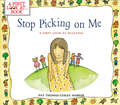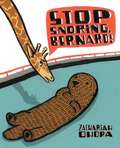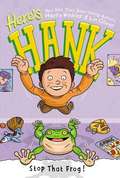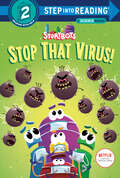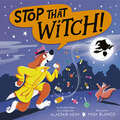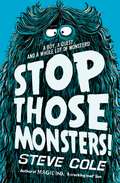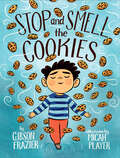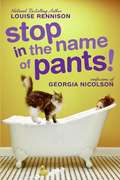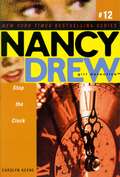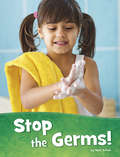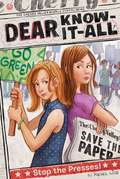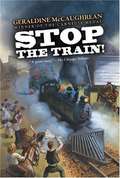- Table View
- List View
Stoner's Boy: A Seckatary Hawkins Mystery (The Seckatary Hawkins Mysteries)
by Robert F. Schulkers“Scholars, teachers, and general readers of To Kill a Mockingbird will find Stoner’s Boy and The Gray Ghost of real interest.” —George Ella Lyon, formerKentucky poet laureate and author of Back to the Light: PoemsMr. Stoner is bad, and it seems his son is turning out just the same. Masked and dressed all in gray, Stoner’s Boy moves like a ghost up and down the river, stealing and causing mischief. Seckatary Hawkins and his club have crossed this dangerous lad, and (to make matters worse) Briggen and the Pelham gang across the river won’t leave the ruthless thief alone: They know that he’s hidden his treasure hoard somewhere in his cliff cave lair, and they’re dead set on having it for themselves. Still, it doesn't seem that anyone can stand up to this clever foe—except maybe another newcomer in town, sharpshooter Robby Hood, who is the only person that Stoner’s Boy seems to fear.Before Nancy Drew and the Hardy Boys, Seckatary Hawkins and his friends from the Fair and Square Club were solving mysteries and thrilling readers with tales of adventure, loyalty, and courage. One of the biggest fans of the series was author Harper Lee, and Stoner’s Boy makes a prominent appearance in her masterpiece To Kill a Mockingbird. Now, the tales of the Fair and Square Club’s encounters with the river renegade known as the Gray Ghost are back in print and ready to ignite the imaginations of devoted fans and new readers of all ages.“Think Our Gang meets Treasure Island along a Kentucky riverbank . . . The wholesome stories espouse morals and tolerance.” —Cincinnati Enquirer
Stones and Bones: Archaeology in Action (Discovery Education: Ancient Civilizations)
by Kathryn SteeleDiscusses the work of archaeologists and describes the sites and artifacts they work with, including such things as ancient cities and burial grounds, temples, sunken ships, tools, and writing tablets.
Stones for My Father
by Trilby KentCorlie Roux's farm life in South Africa is not easy: the Transvaal is beautiful, but it is also a harsh place where the heat can be so intense that the very raindrops sizzle. When her beloved father dies, she is left with a mother who is as devoted to her sons as she is cruel to her daughter. Despite this, Corlie finds solace in her friend, Sipho, and in Africa itself and in the stories she conjures for her brothers.But Corlie's world is about to vanish: the British are invading and driving Boer families like hers from their farms. Some escape into the bush to fight the enemy. The unlucky ones are rounded up and sent to internment camps.Will Corlie's resilience and devotion to her country sustain her through the suffering and squalor she finds in the camp at Kroonstad? That may depend on a soldier from faraway Canada and on inner resources Corlie never dreamed she had....From the Hardcover edition.rlie is strong and can draw on her knowledge of the land she loves, but is that enough to help her survive the starvation, disease, and loss that befalls her in the camp?From the Hardcover edition.
Stones in Water
by Donna Jo NapoliSet in World War II, a young Italian boy and his friends were taken by the Germans and put in labor camps. This is the story of how they endured beatings, starvation, and freezing temperatures, and how some of them survived.
Stones in Water
by Donna Jo NapoliWhen Roberto sneaks off to see a movie in his Italian village, he has no idea that life as he knows it is over. German soldiers raid the theater, round up the boys in the audience, and pack them onto a train. After a terrifying journey, Roberto and his best friend Samuele find themselves in a brutal work camp, where food is scarce and horror is everywhere. The boys vow to stay together no matter what. But Samuele has a dangerous secret, which, if discovered, could get them both killed. Lovers of historical fiction will be captivated by this tragic, triumphant, and deeply moving novel.
Stonewall Hinkleman and the Battle of Bull Run
by Sam Riddleburger Michael HemphillStonewall Hinkleman (yup, that?s his real name) hates participating in historical reenactments with his Civil War?obsessed parents. And they drag him to one every weekend. He can?t play his Game Boy but he has to play his stupid bugle (?cause he?s a bugle boy?how lame can you get?) to lead the battle charges. Who wants to pretend to fi ght in some old war anyway? But one day, Stonewall finds himself transported back in time to the actual Battle of Bull Run?and he?s not alone! Mr. Dupree, an ardent Confederate from Stonewall?s time, has also traveled back in order to change the outcome of the whole Civil War. Stonewall needs to use all of his knowledge of the battle to stop Dupree and save the course of American history as we know it.
Stonewall Jackson: Loved in the South; Admired in the North
by Charles LudwigA biography of the Confederate general who gained the nickname Stonewall for his stand at the first batle of Bull Run during the Civil War.
Stonewall's Gold: A Novel
by Robert J. MrazekA ripping adventure yarn, a moving coming-of-age tale, and a fascinating portrait of the difficulty of life in the Appalachians at the end of the Civil War, Stonewall's Gold is a compelling novel that is certain to appeal to teacher and student alike.
Stonewall: A Building. An Uprising. A Revolution
by Rob SandersCelebrate Pride every day with the very first picture book to tell of its historic and inspiring role in the gay civil rights movement, from the author of the acclaimed Pride: The Story of Harvey Milk and the Rainbow Flag. A powerful and timeless true story that will allow young readers to discover the rich and dynamic history of the Stonewall Inn and its role in the LGBTQ+ civil rights movement--a movement that continues to this very day. In the early-morning hours of June 28, 1969, the Stonewall Inn was raided by police in New York City. Though the inn had been raided before, that night would be different. It would be the night when empowered members of the LGBTQ+ community--in and around the Stonewall Inn--began to protest and demand their equal rights as citizens of the United States. Movingly narrated by the Stonewall Inn itself, and featuring stirring and dynamic illustrations, Stonewall: A Building. An Uprising. A Revolution is an essential and empowering civil rights story that every child deserves to hear.
Stonewall: Breaking Out in the Fight for Gay Rights
by Ann BausumThat's the Stonewall.The Stonewall Inn.Pay attention.History walks through that door.In 1969 being gay in the United States was a criminal offense. It meant living a closeted life or surviving on the fringes of society. People went to jail, lost jobs, and were disowned by their families for being gay. Most doctors considered homosexuality a mental illness. There were few safe havens. The Stonewall Inn, a Mafia-run, filthy, overpriced bar in New York City's Greenwich Village, was one of them.Police raids on gay bars happened regularly in this era. But one hot June night, when cops pounded on the door of the Stonewall, almost nothing went as planned. Tensions were high. The crowd refused to go away. Anger and frustration boiled over.The raid became a riot.The riot became a catalyst.The catalyst triggered an explosive demand for gay rights.Ann Bausum's riveting exploration of the Stonewall Riots and the national Gay Rights movement that followed is eye-opening, unflinching, and inspiring.
Stonewords: A Ghost Story
by Pam ConradThe first time Zoe met Zoe Louise, Zoe was four years old. Zoe Louise was more than 100. From that day on -- living in the same house, separated by a staircase and a century -- Zoe and Zoe Louise have been an important and permanent part of each other's lives. Now Zoe is older. And although Zoe Louise never grows up, she is changing in dreadful, frightening ways. Time is running out for Zoe's frightening ways. Time is running out for Zoe's best friend -- and Zoe is the only one who can help her. To do so, she must travel back 100 years in time and somehow alter the past. But in changing the past, must she also change the present? If she saves her friend's life, will she lose Zoe Louise forever?Zoe's grandparents think that Zoe Louise is Zoe's imaginary friend. The truth, however, is that Zoe Louise lived in Zoe's house a century ago, and her ghost has returned to solve a terrible mystery. . . . An eerie and gripping time fantasy. Conrads spare, vivid prose sustains the suspense, drawing readers inexorably toward a climax as satisfying as it is unexpected. SLJ. 1990 Boston Globe Horn Book Award for Fiction Honor Book1990 Notable Trade Books in the Language Arts (NCTE)1991 Choices (Association of Booksellers for Children)Children's Books of 1990 (Library of Congress)1991 Books for the Teen Age (NY Public Library)1991 Best Juvenile Mystery (Mystery Writers of America)Parenting Honorable Mention, Reading Magic Award1995 California Young Reader Award Zoe's grandparents think that Zoe Louise is Zoe's imaginary friend. The truth, however, is that Zoe Louise lived in Zoe's house a century ago, and her ghost has returned to solve a terrible mystery. . . . An eerie and gripping time fantasy. Conrads spare, vivid prose sustains the suspense, drawing readers inexorably toward a climax as satisfying as it is unexpected. SLJ. 1990 Boston GlobeHorn Book Award for Fiction Honor Book1990 Notable Trade Books in the Language Arts (NCTE)1991 Choices (Association of Booksellers for Children)Children's Books of 1990 (Library of Congress)1991 Books for the Teen Age (NY Public Library)1991 Best Juvenile Mystery (Mystery Writers of America)Parenting Honorable Mention, Reading Magic Award1995 California Young Reader Award
Stop Following Me, Moon!
by Darren FarrellA hungry bear&’s big appetite leads to a lesson about sharing in this silly story perfect for fans of Mo Willems&’ Pigeon books Bear is hungry. So hungry that when he spies a squirrel's berry snack, he can't help taking the whole berry bush. Then, when he wanders past a busy beehive, Bear knows he's hit the jackpot. But someone is on to him—the moon! Or so Bear thinks. Before he knows it, Bear is on the run with his stolen snacks, causing a whole lot of trouble for the other animals in the forest. With big laughs, silly surprises, and a read-aloud-ready refrain, this picture book is perfect for fans of Jon Klassen and Mo Willems.
Stop Picking on Me!: A First Look at Bullying (A First Look at…Series)
by Pat ThomasAre there children in your life who are experiencing the pain of a bully? This book will help give kids advice and information in a gentle and sensitive way. It will also help kids accept the normal fears and worries that accompany bullying while suggesting ways to resolve this upsetting experience.Parents, teachers, and gift givers will find:language that is simple, direct, and easier for younger children to understandinformation about bullyinga helpful book written by a psychotherapist and counselora whole series of books for children to explore emotional issuesThe A First Look At series promotes positive interaction among children, parents, and teachers, and encourage kids to ask questions and confront social and emotional questions that sometimes present problems. Books feature appealing full-color illustrations on every page plus a page of advice to parents and teachers.
Stop Pretending
by Sonya SonesIt happens just like that, in the blink of an eye. An older sister has a mental breakdown and has to be hospitalized. A younger sister is left behind to cope with a family torn apart by grief and friends who turn their backs on her. But worst of all is the loss of her big sister, her confidante, her best friend, who has gone someplace no one can reach.In the tradition of The Bell Jar, I Never Promised You a Rose Garden, and Lisa, Bright and Dark comes this haunting first book told in poems, and based on the true story of the author's life. 2000 Best Books for Young Adults (ALA) and 2000 Quick Picks for Young Adults (Recomm. Books for Reluctant Young Readers)
Stop Snoring, Bernard!
by Zachariah OhoraBernard loves curling up to go to sleep. But there is one little problem. Bernard snores . . . LOUDLY! So loudly that he keeps all the otters awake during naptime. So loudly that Grumpy Giles tells Bernard to move his snoring somewhere else! Sad and lonely, Bernard tries sleeping in new places far away from the other otters: in a lake, in puddles, in a fountain. But no matter where he tries to nap, somebody complains. All Bernard wants to hear are the words "Good night!"
Stop That Frog! (Here's Hank #3)
by Henry Winkler Lin Oliver Scott GarrettHank's class gets to take care of Principal Love's pet frog while he's away, and Hank is thrilled when he's selected to take it home for the weekend. But when he forgets to put the top back on the tank, Hank's excitement quickly turns to panic--the frog has escaped! The frog hunt is on, but time is running out. Hank needs to find that frog, and fast!
Stop That Virus! (Step into Reading)
by Scott EmmonsThe curious crew from Netflix's Ask the StoryBots star in an all-new Step into Reading leveled readerWhat is a virus? How do you catch a cold? Beep, Boop, and the rest of the robots from Netflix's Ask the StoryBots are looking for answers. The inquisitive team make this timely concern interesting, entertaining, and not-so-scary. Boys and girls ages 4 to 6 who love the StoryBots will enjoy this fun and educational Step 2 Step into Reading leveled reader.Step 2 Readers use basic vocabulary and short sentences to tell simple stories. For children who recognize familiar words and can sound out new words with help.
Stop That Witch!
by Alastair HeimA funny, rhyming detective chase set at Halloween, perfect for children ages 3-7.When a mysterious someone steals Detective Cluehound's Halloween candy, he and his sidekick, Sergeant Squirrel, are on the case. But will the two be able to track down the thief before Halloween is over?It's Halloween, and Dog Detective Cluehound and Sergeant Squirrel are enjoying their candy after a night of trick-or-treating. But when they turn their backs for a moment, a cackling someone swoops in and steals their bucket of treats!Thus begins a chase to apprehend the thief. Wherever they look, the witch is one step ahead until—POOF—she disappears. Is Halloween ruined for poor Detective Cluehound? But wait--there appears to be a surprise waiting for the hapless detective in his office....Readers of Tiger Tales&’ Stop That! series join Detective Cluehound and Sergeant Squirrel on an exciting chase to catch a thief whose identity, while hinted at through the clever artwork, is known to the reader but not the detective!
Stop Those Monsters!
by Steve Cole Jim FieldThe Wizard of Oz meets Monsters Inc in this MONSTROUSLY funny stand-alone story from bestselling author phenomenon, Steve Cole.I'm Bob, a human boy stuck in a land of MONSTERS. I'm trying to get out with the help of three - count them, three - incredible creatures.There's Verity, who looks like a giant hamster. Alfie, who's about as scary as a bag of crisps. And Zola, a gorgon who can't turn people to stone (though she can manage cardboard at a push). We're on a crazy, death-defying quest to escape with our lives. And all around us, the cry goes up: STOP THOSE MONSTERS!!!
Stop and Smell the Cookies
by Gibson FrazierA picture book about a rambunctious boy who learns to manage his big feelings. Sometimes Dash gets so excited that his chest feels warm and fuzzy, his toes dance, and his fingertips tickle the air. When that starts, he can&’t seem to control what he does next, and often, trouble follows. Luckily, with a little help, Dash finds a way to slow himself down when big feelings threaten to take over. This joyous book introduces a clever technique to engage the imagination and relax the mind, perfect for those who are impulsive like Dash, those who hold in their feelings, and everyone in between.
Stop in the Name of Pants!
by Louise RennisonTime to gird the loins and pucker up. Blimey O'Reilly's trousers! When Georgia embraced being the girlfriend of a Rock Legend/Luurve God, she thought that was the end of her lovenosity woes. As usual, Georgia is the last to know what she is talking about. Now there's the small matter of a snogging accident involving her matey-type mate Dave the Laugh and some toasted newts in her undercrackers. Can Georgia lock up her red bottom and throw away the key?
Stop the Clock (Nancy Drew (All New) Girl Detective #12)
by Carolyn KeeneJust as I'm gearing up to help plan the Mahoney Library's seventy-fifth anniversary celebration, the beautiful old clock, the very centerpiece of the library, is stolen. There's nothing like a good theft to stop a party! Naturally, I throw down the streamers and get to work. Turns out lots of people wanted that clock -- and what's inside. If I don't hustle, this might become two crimes instead of one....
Stop the Germs! (Health and My Body)
by Mari SchuhYuck, germs! Germs can make us sick. How do we stay healthy? With engaging text and colorful photos, readers find out how to keep the germs away. Stop the Germs! includes a glossary, read more section, kid-friendly internet sites, and an index.
Stop the Presses!
by Rachel WiseSam's love of newsprint clashes with her love for the planet--and her BFF--in a Dear Know-It-All conflict of newsworthy proportions!When Sam hears Cherry Valley Middle School is "going green," she is delighted. Saving the Earth is very important to Sam, plus, she knows she can get a great story out of it. But that's before she finds out one of the environmentally friendly suggestions is to stop printing The Cherry Valley Voice! Who would dare to suggest that the school newspaper be published only online? When she discovers the idea came from her BFF, Hailey, Sam gets even more upset. How will Dear Know-It-All solve this total disagreement?
Stop the Train
by Geraldine MccaughreanIn 1893 Oklahoma's northwest is opened up to settlers by government decree, and Cissy Sissney and her family rush to join the tens of thousands of land runners intent on staking a new claim to their future. The Sissneys and two dozen other folk are the first settlers to arrive at the map-born town of Florence -- nothing but a double plot of sun-baked land, an empty space waiting to be filled. <p><p> Night has scarcely fallen when the trouble begins. A slick, oily-haired man drifts from campfire to campfire, offering -- on behalf of the Red Rock Railroad Company -- to buy out claims for $50 dollars apiece. Several weeks later, after all settlers but one refuse to sell, the president of the railroad lowers the boom. There'll be no more trains stopping at Florence. And without the railroad the town can't survive. So it's up to Cissy and her friends, family, and neighbors to come up with ways -- fair or foul -- to stop the train before they are all forced to abandon their homes forever. <p> From the incredibly versatile Carnegie medalist Geraldine McCaughrean comes a rollicking, beguiling tale of clever shenanigans and heartwarming faith in the promise of a new land.
